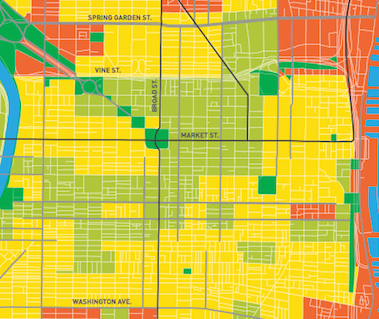General
How Philadelphia Gets To Work

A new report from the Center City District (CCD) has some fascinating figures about how Philadelphians commute to work. Relying increasingly on public transit, bicycles and their own two feet, these eco-friendly commuting habits have become increasingly important to the city’s continued development.
The CCD’s new report reveals in depth statistics on how Philadelphia’s commuters are uniquely different and far more environmentally-friendly than that of the average American. Unlike almost every other American community, Philadelphia’s urban core residents hardly use cars to get to work.
This auto-less commute is possible in part thanks to the sheer density of jobs in the area – the CCD report states that while our suburbs have just 0.9 jobs per acre, Center City boasts an impressive 203 jobs per acre. This remarkable density allows workers to eschew long, car-focused commutes and find jobs reachable by low-carbon emitting means of transit.
As one might suspect, the CCD report also states that the location and layout of different neighborhoods influences their residents’ commuting patterns. For instance, the close proximity of Center City’s residential and business areas means that fewer than one quarter of its residents drive to work. On the other hand, residents of Fairmount, who are near Downtown but have fewer public transit options, are the most likely to bike to work, while Chinatown residents, many of whom live right above their businesses, are the most likely to walk to work.

So what does all this information mean for the city of Philadelphia and its future development? According to Jerry Sweeny, President and CEO of the mega-developer Brandywine Realty Trust, a whole lot. He argues that access to solid transit systems is now a benchmark requirement for smart commercial real estate investment. At a recent forum on development, Sweeny said “There is no question that properties that have access to more than one form of transportation will perform better through peaks and valleys in economic cycles.” After years of market instability, this statement clearly suggests good things for Philadelphia’s continued development.
Of course, this transit-based growth is dependent on our civic leaders maintaining and expanding support for SEPTA, bike lanes, sidewalks and the other transit options that allow Philadelphians to make their green commutes. Like all perks of urban life, it’s something we cannot take for granted.







